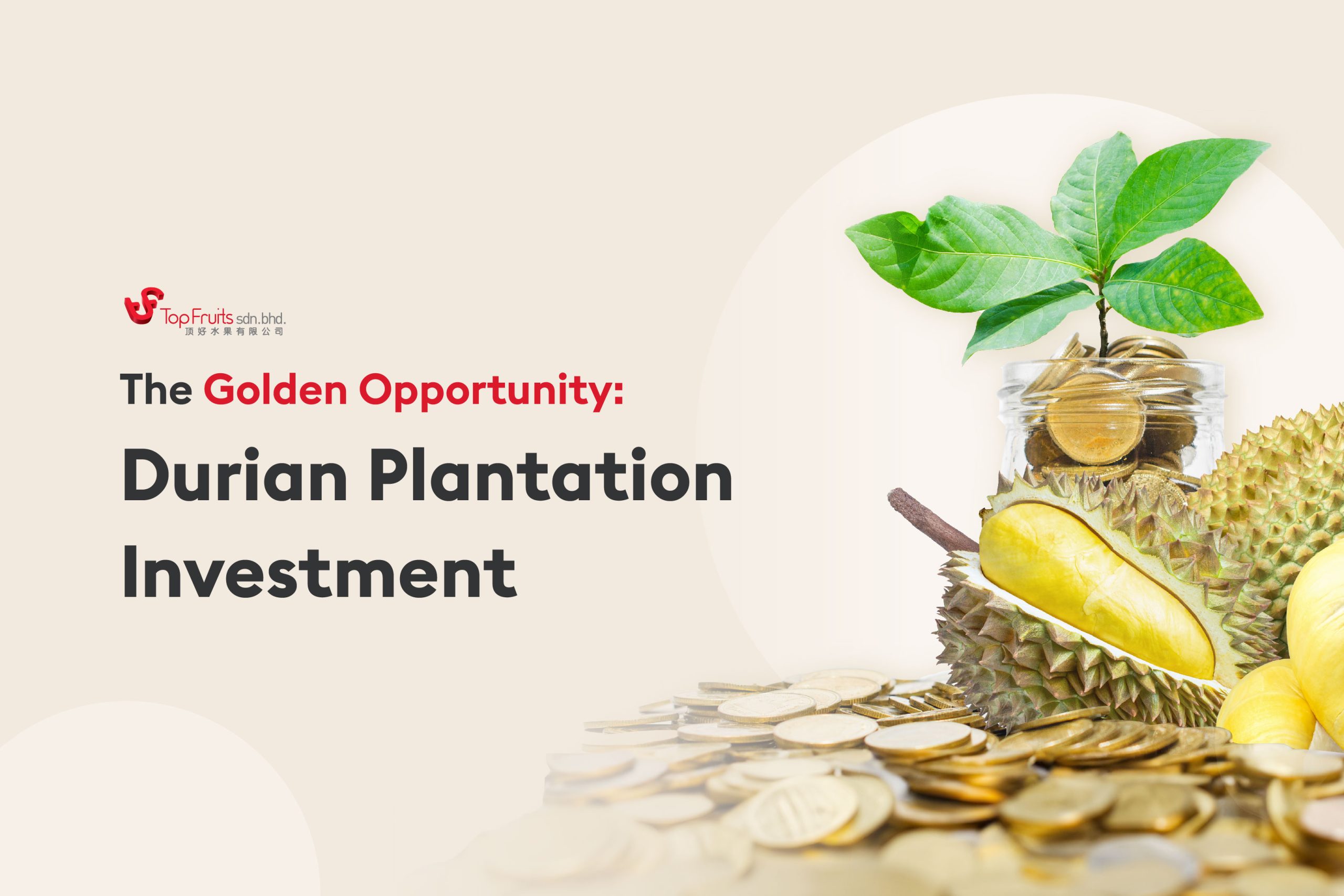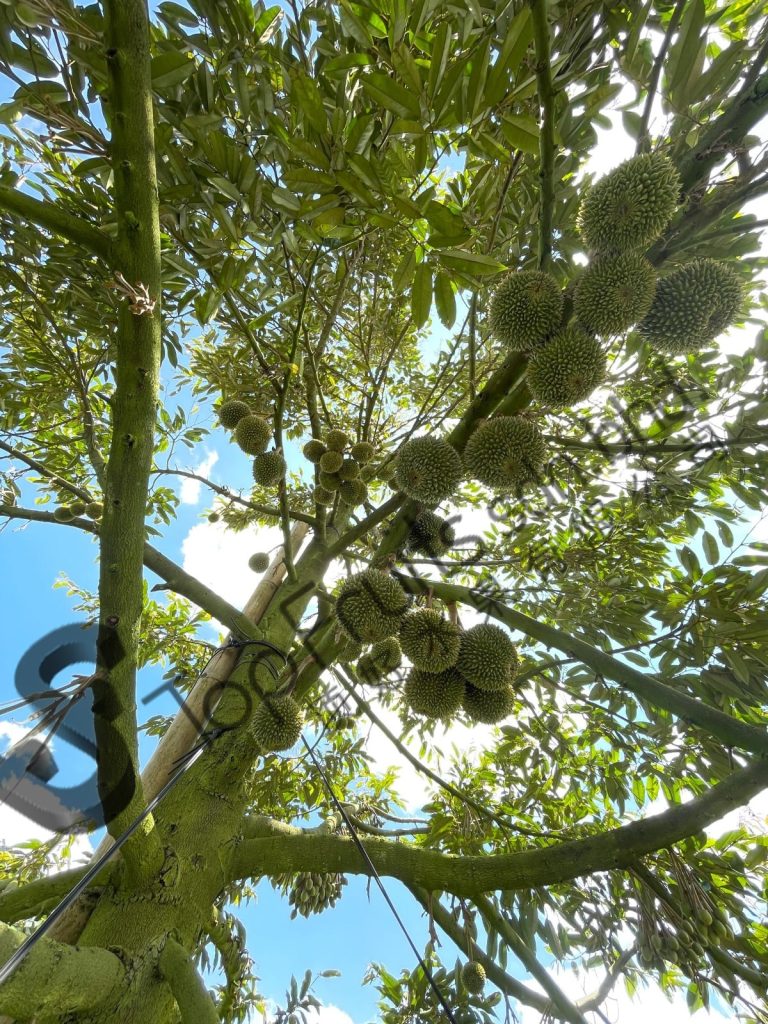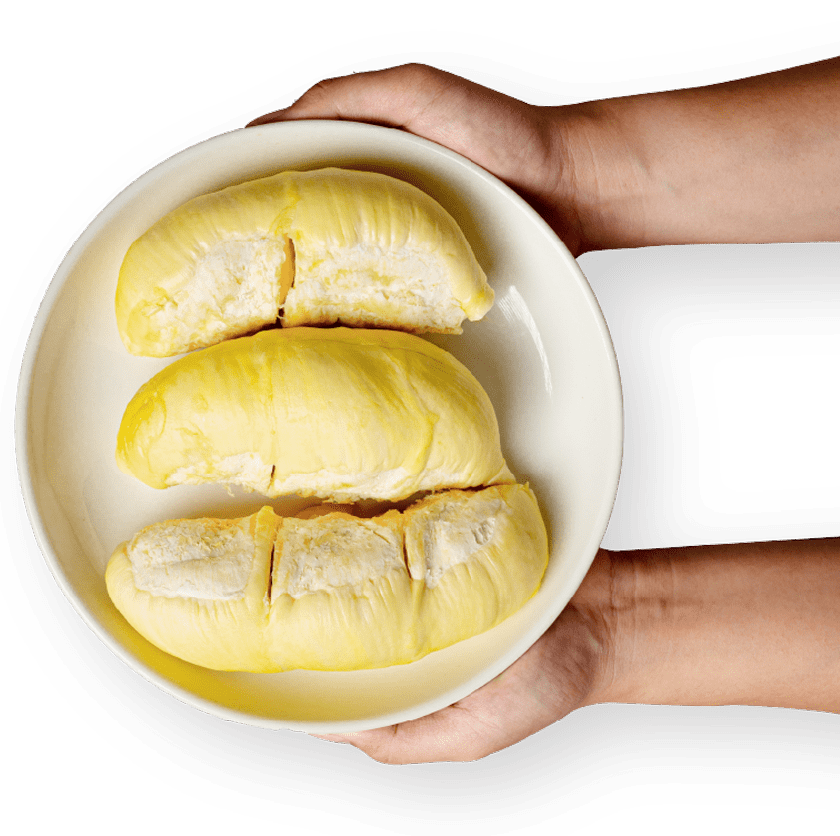01 Oct The Golden Opportunity: Durian Plantation Investment

Malaysia’s durian industry is experiencing a meteoric rise, driven by domestic demand and a growing global appetite for this iconic fruit. The industry’s immense potential is evident in its projected growth to a staggering RM238.4 billion by 2033.
Beyond Southeast Asia, countries like China and Japan increasingly embrace durian, drawn to its unique flavour, nutritional benefits, and cultural significance.
This expanding global market, rising affluence, and urbanisation present a lucrative investment opportunity.
Investors can capitalise on the durian industry’s high-profit margins, premium pricing, and increasing demand. The fruit’s unique qualities and cultural appeal make it a sought-after commodity, further enhancing its investment potential.
The global embrace of durian positions the industry for sustained growth and significant returns for those who seize this opportunity.
Join us as we discover the path to prosperity with durian plantation investments.
Key Considerations
Malaysian plantation giants like Sime Darby, Kuala Lumpur Kepong, Genting, and IOI Plantation have long dominated the stock market.
While palm oil remains a popular investment, durian opportunities are steadily gaining traction, offering investors a promising alternative.
When considering investing in plantation companies, particularly in the durian plantation industry, there are several key factors to weigh in before making an investment:
1. Location
Durian trees can often be found on different terrains and altitudes, but the key to a thriving durian plantation lies in the right site conditions that ensure continued fruit abundance every year.
Ensuring that the opted location has appropriate conditions, such as its climate, soil pH, and sun exposure, inherently determines a durian plantation’s productivity.
By prioritising these site conditions, you can significantly increase the chances of a profitable durian plantation through investments.
A well-chosen location will ensure consistent fruit production and minimise the risk of crop failures and diseases.
2. Weather conditions affecting durian plantations
Weather conditions play a crucial role in the success of durian plantations.
Understanding the potential impacts of various weather factors is essential for investors to assess the risks and rewards associated with this agricultural venture.
Malaysia’s diverse climate and topography have led to varying degrees of durian plantation development across different states, particularly Pahang, Kelantan, Johor, and Penang.
Some of these key weather factors to consider are temperature, rainfall, wind, humidity, and drought.
By carefully considering these weather factors and conducting a thorough regional analysis, you can make informed decisions about durian plantation investments and mitigate potential risks associated with adverse weather conditions.

3. Analyse the yield
Yield is a crucial metric for evaluating the performance of a durian plantation. A high-yielding durian plantation indicates efficient land use and cultivation practices.
While FFB (Fresh Fruit Bunch) yield is commonly used in the palm oil industry, a similar metric for durian would be the number of fruits produced per tree or total fruit yield per hectare.
When analysing durian plantation companies, look for those with consistent and increasing yields.
Although lower yields might occasionally result from younger trees or temporary setbacks, consistently high yields generally signal a plantation’s strong performance and investment potential.
4. Examining financial performance
When investing in a durian plantation company, it’s essential to analyse its historical financial performance. Look for consistent revenue growth and healthy profit margins.
- Revenue growth
A company that consistently grows revenue by 3-5% annually indicates a positive trajectory. Lower growth rates suggest declining prospects. - Profit margins
Aim for companies with steady profit margins of 10-20%. Volatile margins (e.g., significant fluctuations) can signal uncertainty and potential risks.
Beyond revenue and profit, examine the company’s balance sheet and cash flow position. This provides insights into its financial health, debt levels, and ability to generate cash.
5. Certification
Investors increasingly prioritise Environmental, Social, and Governance (ESG) factors in today’s environmentally conscious world.
Investors seeking profitable and sustainable durian plantations should prioritise companies strongly committed to sustainability.
By prioritising certified durian plantations, investors can contribute to a more sustainable and ethical agricultural industry while also benefiting from potential financial returns.
Durian Investment Opportunities
Durian plantations offer a lucrative investment opportunity due to several factors:
1. High profit margins
- Abundant yields
Durian trees are known for their high productivity, producing significant quantities of fruit per tree, yielding approximately 300-400 fruit per tree annually. - Premium pricing
Durian’s unique flavor, coupled with strong domestic and international demand, drives premium prices. Years of careful cultivation further enhance its value.
2. Government support and incentives
The Malaysian government has been instrumental in supporting durian plantation owners, fostering the growth of the durian industry both domestically and internationally with multiple plans and initiatives.
- Rise-UP program:
The Malaysian government’s Farmer Entrepreneur Empowerment Programme (Rise-UP) provides various incentives and support to agricultural entrepreneurs, including those involved in durian plantations, including:- Financial assistance:
Grants, loans, or subsidies to support plantation establishment and expansion. - Training and capacity building
Programs to enhance the skills and knowledge of plantation owners and workers. - Market access
Assistance in connecting farmers with potential buyers and markets.
- Financial assistance:
- Other Incentives
In addition to Rise-UP, explore other government initiatives such as tax incentives, research grants, or technical assistance programs that may be available for durian plantation investors.
By combining the potential for high-profit margins with government support, durian plantation investments can offer a rewarding and sustainable venture.

3. Sustainability and ethical considerations
- Consumer preferences
Consumers are increasingly aware of the environmental and social impacts of the products they purchase.This shift in consumer preferences has led to a growing demand for sustainable and ethically sourced goods, including agricultural products like durian.Nowadays, durian plantation owners have been prioritising sustainability and social responsibility to attract a broader market and build a positive brand reputation.
4. Cultural significance
- Strong domestic demand
The deep-rooted cultural association of durian in Malaysia creates a robust domestic market.This ensures a consistent demand for durian fruit, making it a relatively stable investment. - Tourism potential
Durian plantations can be transformed into tourist attractions, offering visitors unique experiences such as durian orchard tours, fruit picking, and durian-themed events.This can generate additional revenue streams for plantation owners, contributing to local economies and enhancing the overall investment value.
Check out this Durian Market Analysis – Trends, Growth & Market Opportunities (2024) article to discover the lucrative opportunities and potential returns.
Don’t Miss Out: Seize the Durian Investment Opportunity!
Durian plantations offer a lucrative investment opportunity for those willing to navigate the complexities of agricultural ventures.
The combination of high-profit margins, growing global demand, government support, and the cultural significance of durian in Malaysia makes this a compelling option for investors.
Rather than venturing into this complex endeavour alone, partner with Top Fruits Plantation to make your durian investment a success.
Established in 1986, Top Fruits Plantation has a rich history of successfully cultivating durian. Our expertise and experience in comprehensive consultancy services can be invaluable to investors seeking to maximise their returns.
Join the thriving durian industry in Malaysia by investing with Top Fruits Plantation.
Our expert guidance can help you navigate the complexities of durian cultivation and maximise your returns. Contact us today to learn more.
FAQ
1. Is durian plantation a good investment?
Yes. Despite these initial costs, the long-term returns can be highly lucrative, especially with premium varieties like Musang King, which command higher market prices. The return on investment (ROI) in durian farming can be compelling for most investors.
2. How much does a durian plantation cost?
As labour and fertilisers are one of the primary cost drivers for durian plantations, the estimated annual maintenance would cost between RM20,000 and RM25,000 per hectare.
Assuming a yield of 4,500 kilograms per hectare (approximately 30 durians per tree) translates to a maintenance cost of roughly RM4.50 to RM5.00 per kilogram of durian.
3. What is the profit margin for a durian?
Profit margins for durian can vary significantly. While general estimates range from 20% to 50%, certain factors can influence profitability:
- Variety
Premium varieties like Musang King can command higher prices, leading to profit margins exceeding 65%. - Market conditions
Demand and supply dynamics, as well as competition, can affect pricing and profitability. - Production costs
Efficient management of labour, fertilisers, and other inputs can positively impact profit margins. - Distribution channels
Selling directly to consumers or through premium markets can maximise profits.
To accurately assess your potential profit margin, it is essential to thoroughly analyse your specific operation, considering factors such as variety, cultivation practices, market conditions, and costs.

